Eccentric characters, slapstick comedy and hearty encouragement of audience participation: nothing says Christmas in the UK quite like panto season. Enjoying a fairy tale retold as an eccentric, topsy-turvy musical comedy in the spectacle that is pantomime is now a quintessentially British Christmas tradition, but for most of us its origins and exactly why it has become such a phenomenon is a bit of a mystery.
- What is a Pantomime?
- Where Did Pantomime Come From?
- A Brief History of Pantomime
- Why Are Pantomimes Performed at Christmas?
- The Commercial Impact of Panto Season
- What Are the Most Famous Pantomime Stories?
- What Are Some of the Biggest Pantomime Traditions?
- What Are the Characters in a Pantomime?
What is a Pantomime?
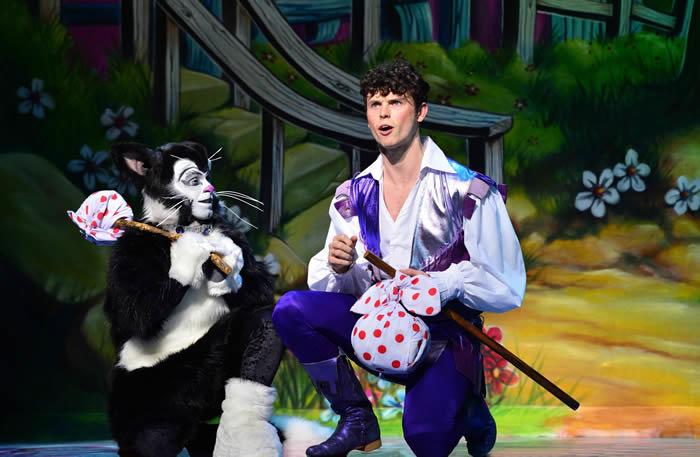
A pantomime is a popular genre of family Christmas theatre in the UK based on fairy or folk tales. Pantomimes (or “pantos” for short) take a traditional story such as Cinderella or Peter Pan and turn it into a bright and bold musical comedy that includes songs, dancing, slapstick humour and lots of audience participation.
Pantomimes are aimed at a wide family audience so have a fairly simple plot mixed with variety entertainment such as dancing and songs, and a stock group of characters including a panto Dame, villain, good fairy, prince and princess. Pantomimes are performed across the UK every year and in 2016 a study found that panto had overtaken comedy as the genre of theatre which filled the most seats in UK theatres.
If you have never seen a pantomime before, the experience may seem a bit strange and at odds with usual theatre etiquette. Audiences are encouraged to shout out and verbally interact with characters and two of its main features are cheeky jokes and innuendo. They are also very well known for star casting; most pantomime casts include comedians, light entertainment stars and soap opera actors to get audiences even more excited about watching their local panto each year.
Pantomime Meaning
The term “pantomime” is derived from the Latin “pantomimus” and Greek “παντόμιμος” (pantomimos), which referred to a dancer or performer who acted every role in a story. Pantomime may seem as British as fish and chips and cups of tea, but like those two stalwarts of our kitchen tables it originated in its earliest form abroad.
Where Did Pantomime Come From?
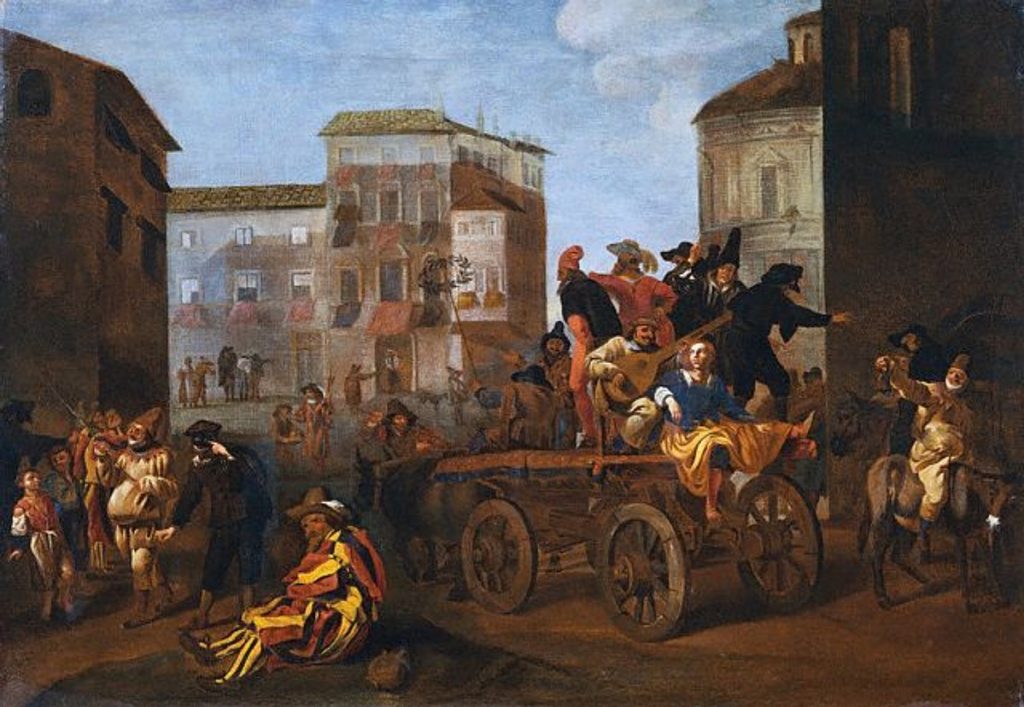
Commedia dell’arte was theatre for the people, performed by travelling troupes in streets and market squares. It originated in Renaissance Italy and was popular across Europe between the 16th and 18th centuries. Audiences responded positively to its use of witty humour; a mixture of scripted and improvised acting; acrobatics; comically exaggerated stock characters; and music.
Some of the most popular stock characters in commedia dell’arte began to make their way into English entertainment by the 17th century. It was the Harlequin figure, however, who paved the way for pantomime as we know and love it today.
A Brief History of Pantomime
1600s: Commedia Dell’arte Crosses the Channel to London
Commedia dell’arte’s clownish, comic servant Harlequin took on a heroic and romantic role in London, and the harlequinade was born. Harlequinade was a comic slapstick play about two lovers, Harlequin and Columbine, who elope and are chased by her father and his bumbling servants. Harlequinade was a very popular form of entertainment between the 17th and early 19th centuries.
1702: London’s First Pantomime Opens
John Weaver at Theatre Royal Drury Lane and John Rich at Lincoln’s Inn Fields Theatre were the forefathers of pantomime. They developed productions that opened as classical stories set to ballet and opera and ended with a comic “night scene”. Weaver’s Tavern Bilkers is thought to be the earliest pantomime performance in London, playing Drury Lane in 1702. From 1716, pantomime became a regular feature at Drury Lane and in 1717, Weaver’s The Love of Mars and Venus, an Entertainment of Dancing became the first production to use “pantomime” on its poster.
1717 – 1720: Early Pantomime and Harlequinade
John Rich introduced the character of “Lun” (short for “lunatic”), based on the Harlequin figure in commedia dell’arte. He developed the format of a Greek or Roman inspired re-telling that featured a light-hearted harlequinade sequence and was also responsible for the first instances of incredible stage-magic and effects that are common in modern panto:
Amazing transformations happened at the touch of Harlequin’s magic wand, with mechanical serpents and flying vehicles. Rich also introduced animal roles: dragons, ostriches, dogs and camels.
Professor Jane Moody, A Look into the History of Pantomime
Audiences loved the combination of slapstick comedy, deft acrobatic sequences, stage illusions and upbeat music. A night at the theatre was rarely complete without the cheering sight of Harlequin and Columbine outwitting her father and his henchmen.
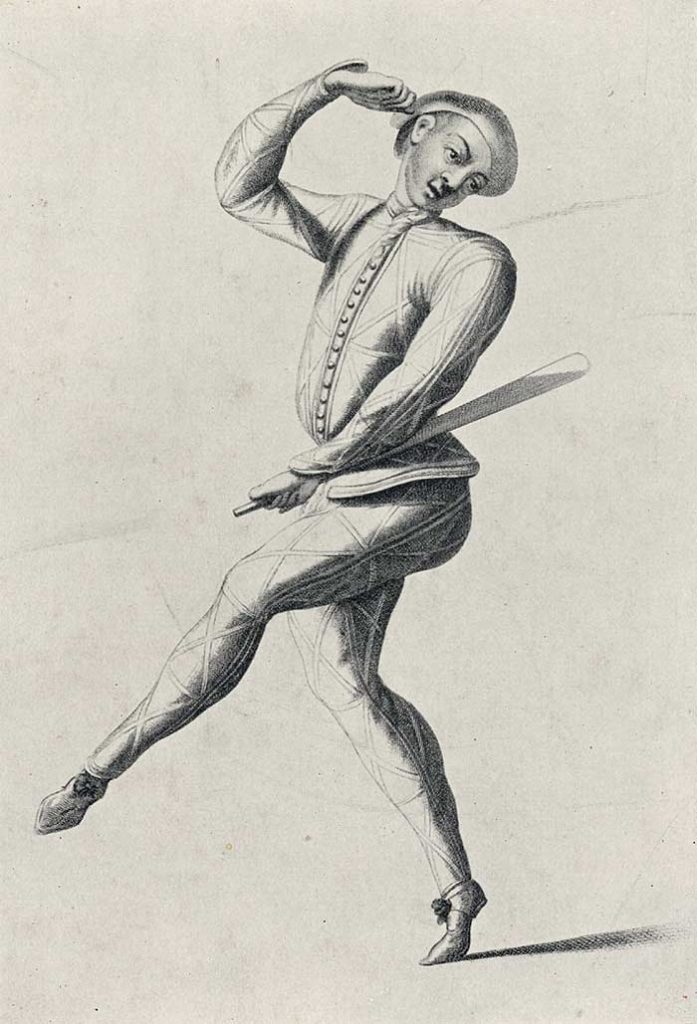
The Harlequin and harlequinade sequence dominated pantomime for around 150 years as theatre managers competed to make the biggest, boldest and most effects-laden show. At Drury Lane, David Garrick delighted audiences with a speaking Harlequin, and employed Rich’s own pupil Henry Woodward to write new stories for him, incorporating English folk tales such as Robin Hood and Dick Whittington.
1800s: Send in the Clowns
In the early 19th century, Joseph Grimaldi introduced the Clown to pantomime, and started to edge out Harlequin in terms of audience popularity. Grimaldi’s clown introduced many of the panto conventions audiences still love today such as prat falls, “butter slides”, nonsense songs and banter between characters.
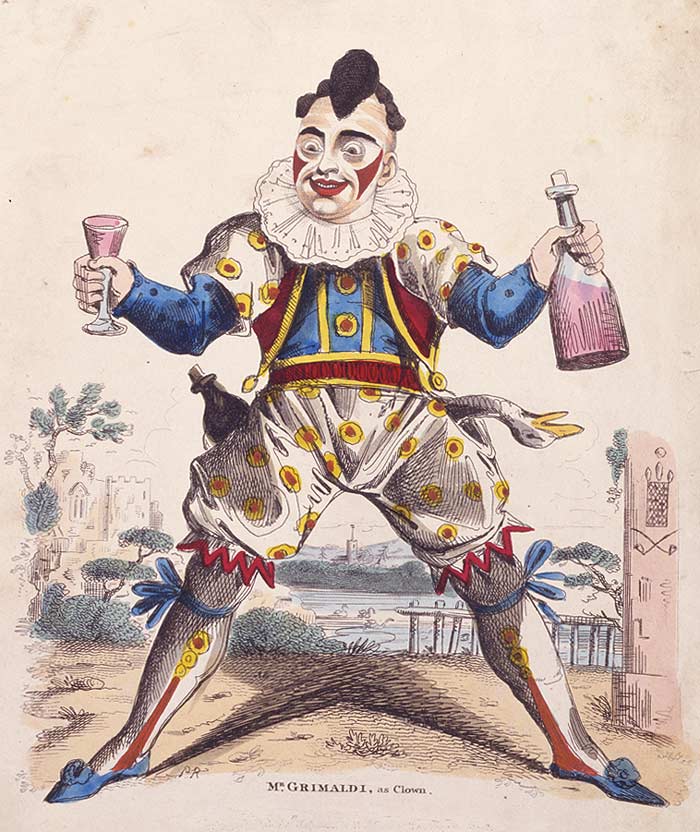
With his stark white face paint, red mouth, billowing costume and fondness for sending up the real world through silliness and satire, Grimaldi’s Clown set the stage for two stock panto characters: the Dame and the comedy sidekick.
Grimaldi’s Clown elevated the harlequinade and made it the most exciting part of a pantomime. In the 19th century children began visiting the theatre at Christmas, New Year and Easter, eager to enjoy the fast-paced, slapstick chaos of chase scene led by the Clown.
1843 – 1900: The Decline of Harlequinade
In 1843 the government allowed all theatres to use spoken dialogue and the harlequinade began to fall out of fashion. The focus instead turned to the fairy tale elements of pantomime and James Planche and Henry James Byron began to emphasise puns and wordplay in their scripts
In the 1870s, Drury Lane manager Augustus Harris co-wrote and produced some spectacular pantomimes which focused on the visual awe of the production. Harlequinades became a small element of the show, before dwindling at the turn of the century. Some of its comic elements were incorporated into the main pantomime.
1880s: The Dame Arrives
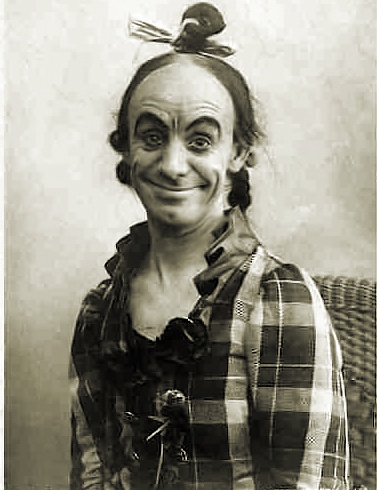
In the late 18th century, Dan Leno began playing female roles like Widow Twankey in Aladdin. His portrayal of Twankey and other world worn older women who use humour to get by revitalised the Dame archetype, and she is now one of the most iconic in the panto genre.
1910: Palladium Panto
The Palladium Panto is a hugely popular Christmas tradition in London. In 1914, the Palladium staged Dick Whittington, and productions including Aladdin and Cinderella left audiences engrossed and delighted over the following years. Panto season continued to feature at the Palladium all the way to 1987, and more recently returned in 2016. This year’s Palladium Panto is Jack and the Beanstalk starring Julian Clary, Dawn French and Alexandra Burke.
Why Are Pantomimes Performed at Christmas?
There are a few theories about why pantomime is performed at Christmas. One is that it harks back to Medieval mummers plays. A mummers play was a traditional folk play performed in masks, often inspired by the tale of Saint George and the Dragon, which involved stage fights, magical creatures and humour. Another past Christmas tradition with links to pantomime’s anarchic and liberating spirit is the Tudor Feast of Fools, which was presided over by the Lord of Misrule.
The biggest link between pantomime and Christmas however is 18th century actor, playwright and theatre manager David Garrick. Garrick was emphatically not a fan of pantomime – he even wrote Harlequin’s Invasion; or, a Christmas Gambol in which the spirit of Shakespeare drives off the Harlequin!
If they won’t come to Lear and Hamlet, I must give them Harlequin.
David Garrick
However, Garrick was also a businessman who knew that pantomimes were money-makers. He staged pantos at Drury Lane but restricted them to the Christmas period so they were associated with the childish fun and gaiety of the season. As pantomime became more tailored to families and children, the association with Christmas stuck. Garrick may have thought panto was muddying the name of legitimate theatre, but he unwittingly encouraged one of our best-loved traditions.
Did you know? Pantomimes dominate over Christmas and New Year, but are not limited to the festive season. There are often touring or one-night-only pantos throughout the year and at Easter.
The Commercial Impact of Panto Season
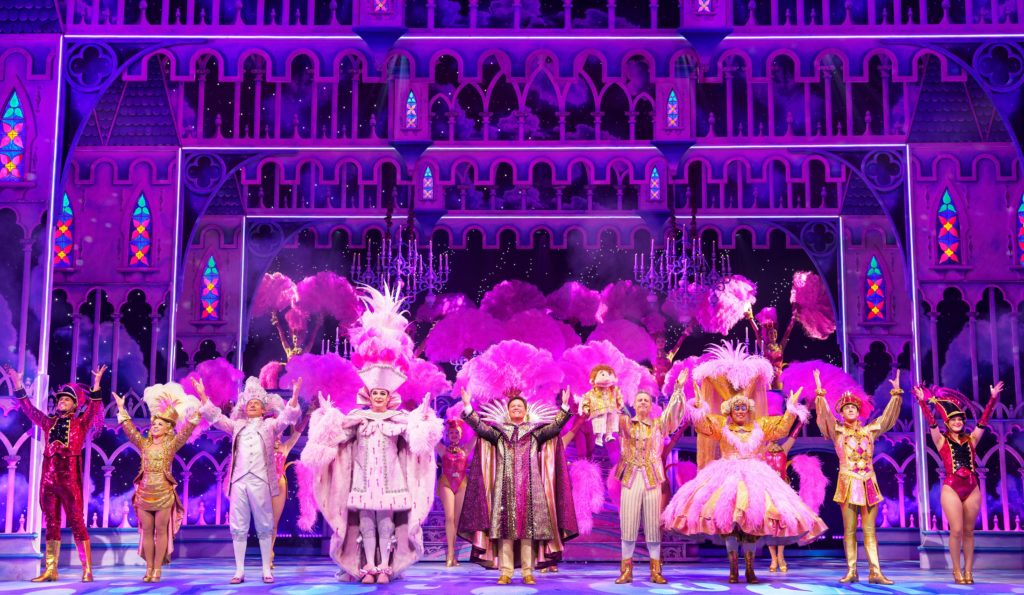
In 2019 panto ticket sales grossed over £60m, proving that there is still a huge appetite for it in the UK. This is heartening news for many regional theatres who rely on pantomime income to subsidise other community outreach and new productions throughout the year. A 2020 UK Theatre survey found that 40% of theatres outside of London believed they could face insolvency if panto season didn’t go ahead. For both audiences and theatre makers, pantomime is one of the most rewarding, welcoming and sustaining shows around.
Our pantomime near me page lists the big hitter pantos of 2022 so go and book tickets and support your local theatre.
Panto’s ubiquity also breeds familiarity and nostalgia. When the nights draw in and Christmas approaches you’re hard pressed to find a village, town or city in the UK that isn’t hosting their annual pantomime. Amateur groups and professional city centre venues are all united in bringing their communities together to enjoy the anarchy, chaos and joy of a pantomime.
What Are the Most Famous Pantomime Stories?
Most pantomimes in the UK don’t have a direct link to Christmas and are instead based on fairy tales, folk tales and nursery rhymes. Everyone watching will be familiar with at least some of the characters and stories. Some of the most popular traditional pantomimes include:
- Cinderella
- Aladdin
- The Pantomime Adventures of Peter Pan
- Snow White & the Seven Dwarfs
- Dick Whittington
- Sleeping Beauty
- Jack and the Beanstalk
- Beauty and the Beast
- Goldilocks and the Three Bears
These pantos all have a basic plot to follow, but theatres will often work with a writer to produce a new version with different jokes, songs or even extra characters. It’s very rare that any panto will follow the original story to the letter, and often characters or inspiration from various fairy stories will cross over from one to the other.
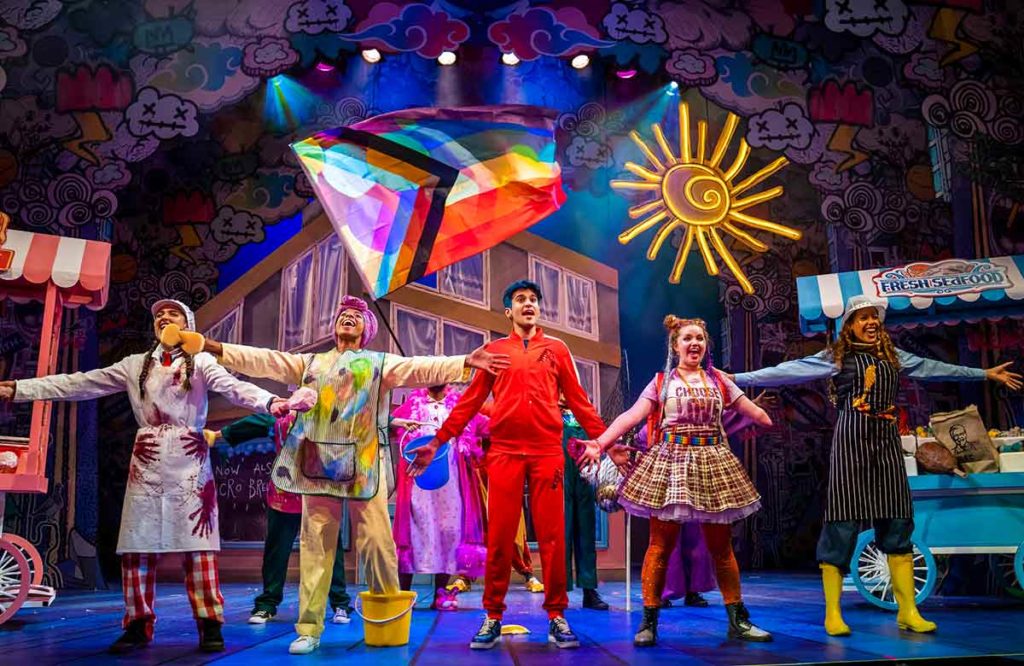
In recent years, some bold and exciting versions of panto have emerged, such as Peter Rowe’s Rock ‘n’ Roll pantos which incorporate chart hits instead of humorous original songs. In London, Lyric Hammersmith Theatre has built a reputation as “the coolest pantomime in town” (WhatsOnStage) for rewriting pantos to incorporate modern music, social issues and progressive themes which reflect its diverse contemporary audience.
What Are Some of the Biggest Pantomime Traditions?
There are many pantomime traditions and conventions, although it isn’t necessary to include every single one in a modern show. A lot of panto traditions are kept in because they are tried and tested ways to make people laugh and delight in the magic of the season.
Traditions also make pantomime an extra special, nostalgic event for families. Lots of adults take their children or grandchildren to a pantomime because they also enjoyed watching them as children.
Some of the biggest pantomime traditions are:
Audience Participation
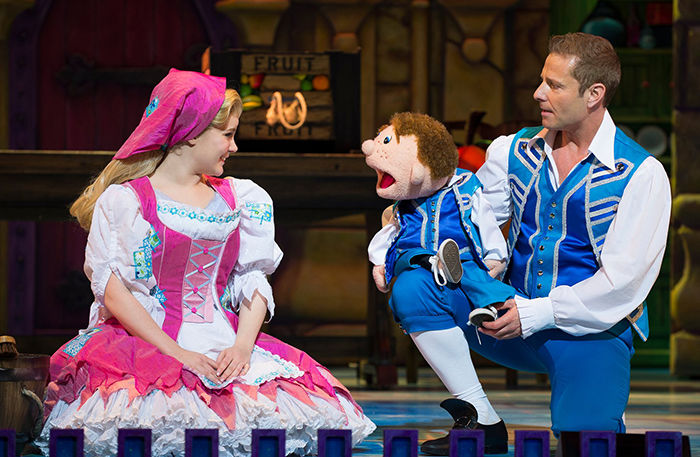
Pantomime encourages its audience to be as loud as possible, and it’s normal to shout out at the stage throughout the show. Common examples of audience participation include:
- Booing, hissing and jeering at the villain
- Shouting “oh not it isn’t!” and similar phrases as a call-and-response with a character on stage
- Shouting “he’s behind you!” or “it’s behind you!” if a character is looking for something, or someone, on stage
- Sympathising with badly treated sidekicks by giving them a big, sympathetic “awww” when they look sad
- Sing-a-longs at the end of the pantomime
Audience participation is very popular with children who enjoy being invited to interact with the characters.
Slapstick Comedy
Pantomime makes heavy use of slapstick physical comedy including over-the-top acrobatics and stunts, characters getting spectacularly knocked out and exaggerated facial expressions.
One of the biggest slapstick moments in a panto is the slosh scene. This extended scene involves a character being covered in a liquid or messy substance such as custard, foam or cornflour mixed with water. An example of a slosh scene is in Aladdin, when Widow Twankey and Wishee Washee might end up throwing soap suds at each other.
Did you know? The term “slapstick” derives from the wooden bat or sword that John Rich’s Harlequin used to magically transform the scenery on stage. It was achieved by hitting and knocking down hinged flaps to reveal the new scenery.
Cross-dressing
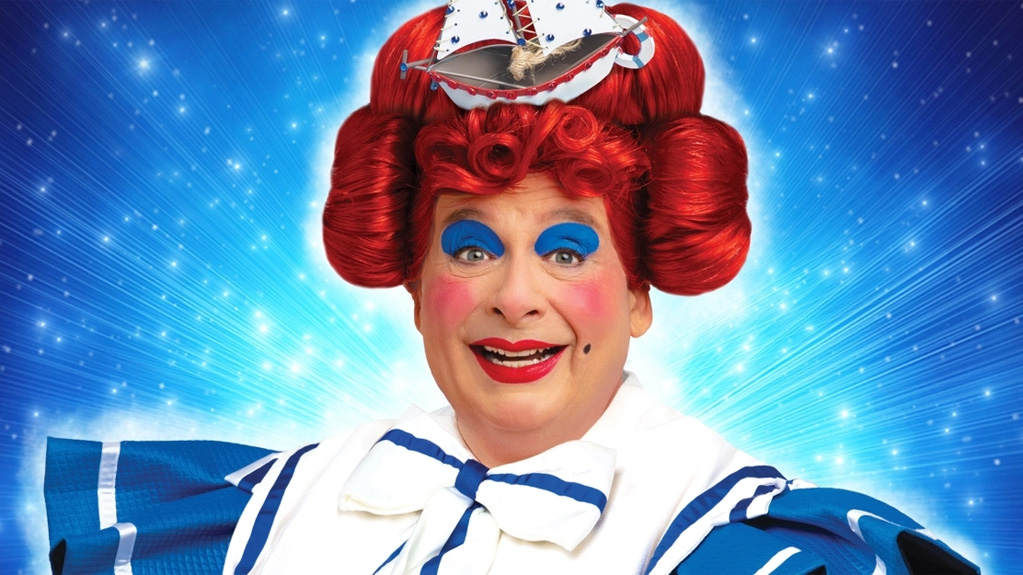
Traditionally both the panto Dame and principal boy have been cross-dressed roles. The principal boy is no longer played by a young woman at every performance, but the panto Dame is still largely played by a man wearing a bright and exaggerated costume and makeup.
Several drag artists, including Paul O’Grady, have starred in panto as their Drag Queen persona or another drag character, and there are now some adult pantos performed almost entirely in drag.
In modern pantomimes, it’s very common to see roles played by a different gender and comedy sidekicks, fairies and villains are all played by a variety of performers.
Pop Culture References
Panto scripts can easily be amended to include cheeky references to current affairs or pop culture. Whether it’s a joke about politics, celebrities or the inclusion of the year’s biggest pop song, panto always has its eye on the news and isn’t afraid to raise an eyebrow in that direction!
Innuendo and Adult Humour
Pantomime is a family-friendly form of entertainment with a lot of cheesy jokes. However it is also very well known for slipping in double-entendres and adult humour, often from the Dame or sidekick. These jokes will fly over children’s heads but give adults a good laugh.
Music
Pantomimes usually feature a few songs, often original lyrics set to well-known tunes. There may also be straightforward pop songs used for comic effect, such as when a character enters, or at the end for a sing-a-long. There is always at least one song in a pantomime which requires audience participation, often the song sheet at the end of the story.
Song Sheet
The song sheet occurs at the end of the pantomime. A couple of characters such as the Dame or sidekick remain on stage and invite two or three children to join them. They ask the children simple questions and tease them with funny responses, before announcing that they have a song prepared.
The song sheet song is usually a memorable tongue twister, uses simple lyrics, or is based on a pop song. The audience is encouraged to join in and might be asked to sing different parts as loudly as they can.
Guest Stars
Pantomime has a long and fond history of featuring soap opera actors, TV presenters, comedians and musicians. This tradition stretches back to the 19th century, when Augustus Harris hired popular variety artists for his pantomimes.
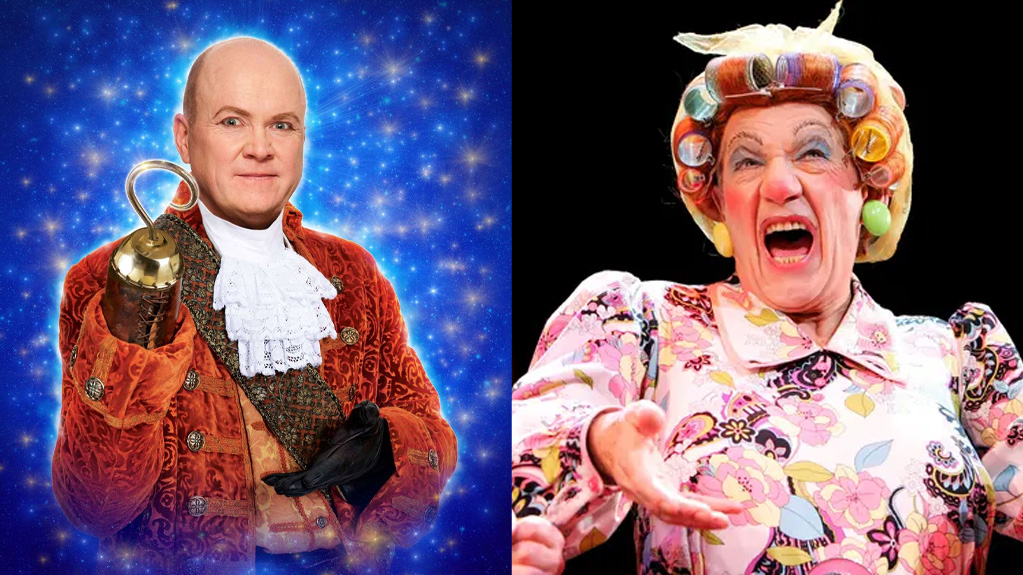
Although not unfairly considered the domain of light entertainment stars – and who doesn’t love seeing a familiar face from Coronation Street or EastEnders dressed as a Dame, fairy or cackling villain? – it is also a much-loved genre for actors of all stripes. Sir Ian McKellen cut his teeth on panto before becoming a Hollywood name, and in 2022-23 will star as Mother Goose on a limited UK tour.
What Are the Characters in a Pantomime?
Principal Boy
The principal boy is sometimes, but not always, the titular character of a pantomime – such as Aladdin or Dick Whittington. If they are not the titular character, they may be a prince or a country lad with a heart of gold. The role of principal boy is traditionally played by a young woman wearing boy’s clothing, but this can vary in modern pantomime.
Principal Girl
Like the principal boy, the principal girl may be the titular character such as Snow White or Cinderella, or a supporting romantic interest. They are sometimes a damsel in distress, although modern pantomime does try to give the principal girl a more active role whether she is the main or supporting character.
Panto Dame
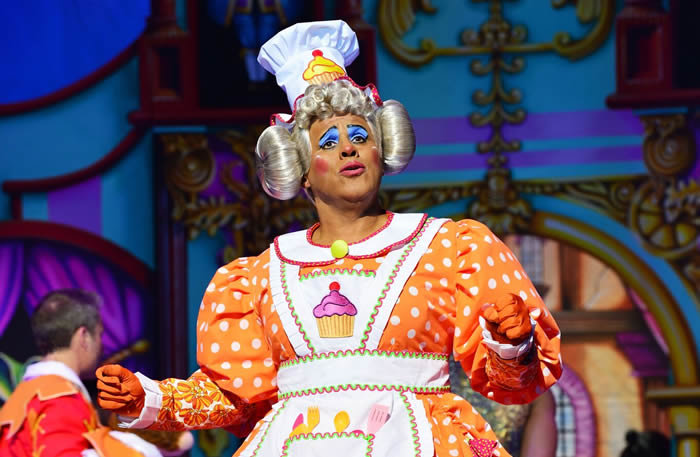
The Dame is an older woman – often the lead’s mother or motherly figure – played by a man in drag. These include Widow Twankey, Mother Goose and the Cook in Dick Whittington. Dames wear bright, bold costumes, exaggerated makeup and elaborate wigs. They are often likable, warm, funny and make liberal use of adult humour and innuendo. Some villains can also be played as panto Dames.
Many actors have spent their careers playing the Dames every Christmas and are beloved by UK audiences. These include Christopher Biggins, Clive Rowe, Nick Wilton, and the current longest-serving Dame, Berwick Kaler who has performed annually in York since 1977.
Villain
The panto villain is a sneering, jeering character who plots against the plucky young hero. They often take the form of a wicked witch, wizard or other magical figure and have a distinctive evil laugh. More than happy to squabble and stamp their feet if the audience boos their evil plans, the dramatic but humorous downfall of the panto villain is a highlight of the show.
Good Fairy
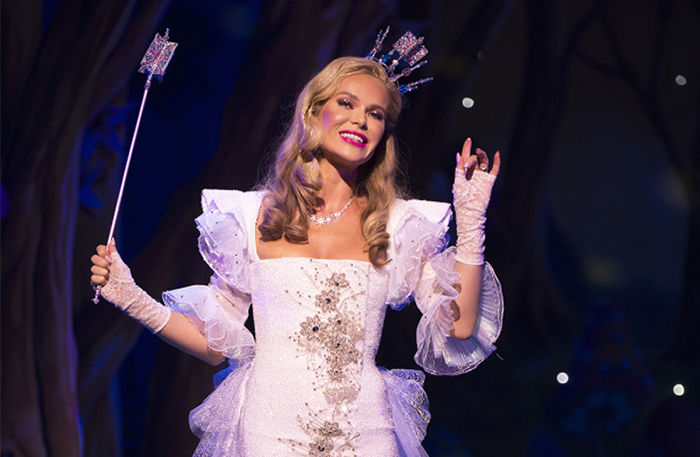
The Good Fairy is on hand to help the principal boy or girl on their adventure. Sometimes a little ditzy, the Good Fairy nonetheless waves her magic wand and tries to make wishes come true. She also acts as the moral guide through a pantomime, making sure the hero gets where they need to be to defeat the villain.
Did you know? The Good Fairy traditionally enters stage right (your left) and the villain from stage left (your right). This is a hangover from medieval mystery plays which linked stage left with Hell and stage right with Heaven.
Comic Figure (Sidekick)
The comic figure is a low-status friend of the principal girl or boy, often laundry boys, butlers or servants. In their role as sidekick, they talk directly to the audience and might even hand out sweets. The sidekick is sometimes in unrequited love with the principal, but no matter what they eventually get a happily ever after either through a better job or another romance.
Comic figures in panto include Buttons, Wishee Washee and Muddles.
Henchmen (Double Act)
Every villain needs a henchman who will do the dirty work for them. Sometimes alone but often part of a double act, the henchmen aren’t very smart and may hinder rather than help the evil plan. Double acts in panto include the Ugly Stepsisters in Cinderella.
Panto Horse
The panto horse is traditionally played by two people in a horse costume with lots of physical comedy as they attempt to coordinate the front and back end. Panto horses can also be cows or even camels depending on where the story is set. Panto horses have become their own pop culture phenomenon, and there have even been pantomime horse races for charity.
Pantomimes can also feature other animal sidekicks with strong personalities of their own, such as the cat in Dick Whittington.
Is Pantomime a Christmas Tradition for Your Family?
Do you visit your local theatre to enjoy a pantomime every year? What has been your favourite panto experience? Let us know in the comments.


2 replies on “What is a pantomime and why do they play at Christmas? ”
Our first-ever Christmas in the UK as a family found us living in a village outside of Lichfield, in the Midlands. Our daughters–aged 10 and 7 at the time–were invited by their new English friends to a pantomime. As I recall it was Puss n’ Boots and was performed in the Garrick theatre of Lichfield. They both loved it!!
The pantomime remains one of our best memories of that first Christmas in England and one that rates right up there with Quality Street Sweets–another new experience for us “Yanks”.
Now my older daughter lives in London so we visit at least twice a year. We’re still making wonderful memories, but few can top the memory of that panto!
As an American, I only knew about Pantomime because of a set of sketches on Monty Python’s Flying Circus that made me want to find out all about them. As a community theater performer, they look fantastic. Wish they’d catch on over here. I think it would be great fun to perform in.